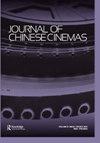Rewriting history, narrating nation: The great wall inSino-US co-productions in the new millennium
IF 0.4
3区 艺术学
0 FILM, RADIO, TELEVISION
引用次数: 0
Abstract
Abstract This paper compares the representations of the Great Wall of China in three Sino-US co-produced films, Shadow Magic (西洋鏡, Ann Hu胡安, 2000), Dragon Blade (天降雄師, Daniel Lee李仁港, 2015), and The Great Wall (長城, Zhang Yimou張藝謀, 2016). Instead of seeing the Great Wall as a structure that demarcates clear boundaries, I read its film representations as symptoms of anxieties over the impossibilities of maintaining well-defined borderlines. All three films employ the image of the Great Wall to serve as a metonym for the Chinese nation. They tell the story of East-West encounters to construct their own versions of Chinese identity. As each film “narrates its nation,” it engages with recorded or imagined histories to construct an alternative historiography and reconstruct a new Chinese identity. Although all of the three films begin with references to historical facts, they all take liberties and embellish historical accounts with sensationalized fantasies of cross-cultural encounters. I read such rewriting of history as an expression of the People’s Republic of China’s official policy of advancing a nationalist agenda of global domination through soft power.改写历史,叙述民族:新千年中美合拍的长城
摘要本文比较了中美合拍的三部电影《影魔》中对中国长城的表现(西洋鏡, 胡胡安, 2000),《龙刃》(天降雄師, Daniel Lee李仁港, 2015),以及长城(長城, 张艺谋張藝謀, 2016)。我没有把长城看作是一个划定清晰边界的结构,而是把它的电影表现看作是对不可能保持清晰边界的焦虑症状。这三部电影都以长城的形象作为中华民族的转喻。他们讲述东西方相遇的故事,以构建自己版本的中国身份。每一部电影都在“讲述自己的民族”,它与记录或想象的历史相结合,构建一种另类的史学,重建一种新的中国身份。尽管这三部电影一开始都提到了历史事实,但它们都很随意,用跨文化相遇的耸人听闻的幻想来美化历史。我读到这种对历史的改写是为了表达中华人民共和国通过软实力推进民族主义全球统治议程的官方政策。
本文章由计算机程序翻译,如有差异,请以英文原文为准。
求助全文
约1分钟内获得全文
求助全文

 求助内容:
求助内容: 应助结果提醒方式:
应助结果提醒方式:


